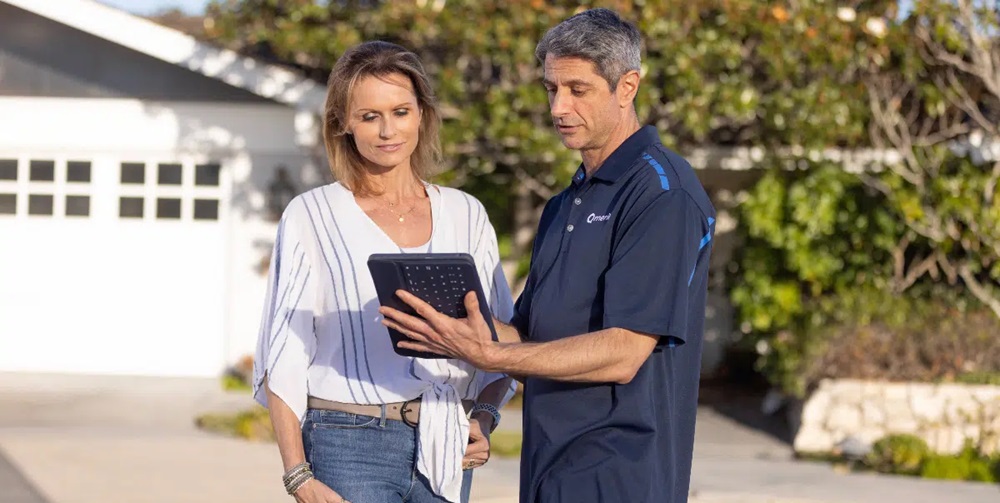Keep Your EV and Charger Safe From Harm With Surge Protection

4 Min. Read
Today’s modern technology is vulnerable to power surges. Protection from surges is also an important consideration when installing an at-home charger for an electric vehicle (EV). The right device will protect your EV, charger and home electrical system from over-voltage.
Read on to learn what you need to know about power problems, how to achieve EV charging station safety and how to protect your other technology from power surges.
Why surge protection matters with EV charging
Imagine this scenario: You’re the proud owner of an EV charger in your new house loaded with computers, smart TVs and other technology. One evening, you come home from work to find a house full of dead technology. You rush to the garage to check your EV charger, and it too has flatlined.
You and your technology are the casualties of a power surge caused by an overloaded transformer that blew up in your backyard or a lightening strike. You are now in for a lengthy process of replacing all of your gear and will have to go elsewhere to charge your EV in the meantime.
But here is the good news: You can easily prevent this nightmare from becoming reality by installing a surge protection device (SPD) in your home. Doing so will provide you with EV charging station safety as well as peace of mind.
Power surges and SPDs
Electric current travels through a conductor wire like water through a hose. The flow, or pressure, of current is measured by voltage. If the voltage is at a constant rate, there are no issues with your connected equipment. But if there is a sudden and significant voltage increase (power surge), high-tech equipment suffers damage. Equipment that uses microprocessors, as EV chargers do, is particularly vulnerable to surges.
SPDs are appliances that detect voltage surges and direct the excess voltage over a preset threshold to a ground line, into the earth—protecting your equipment from the surge. They are usually installed between the main panel and the incoming utility line, between the panel and the load, or both.
Why SPDs are needed for EV charging
It is all about voltage tolerance. The standard U.S voltage is 240V/120V. Hybrid EVs can handle a voltage range from 100V to 200V. EV batteries can take up to 400V. Surges beyond that can damage the equipment or batteries. Certain events, for example, lightning strikes, can generate much higher voltage surges.
And it is not just huge, sudden surges that cause problems. Smaller fluctuations over time will eventually degrade your EV charger and batteries.
Finally, be sure to check your EV warranty. Charging an EV battery without an SPD may void your warranty.
SPDs mitigate the following major risks, among others:
- Many charging stations are outdoors, and direct or indirect lighting strikes can happen near them. Indoor stations are also vulnerable to lightning strikes, which can generate tremendous voltage surges.
- Utilities themselves can cause surges from activity switching, short outages or malfunctions. Each of these causes a voltage drop and is usually followed by a surge.
- Transformers can fail, causing heavy surges.
- Inverters used with battery backup or solar systems can sometimes cause over-voltage situations.
Installation Tips
These tips can help you ensure your EV charger installation is done right:
- Exterior charging installations have an SPD at the main panel and each charger. You can replicate this configuration in your home by placing an SPD between the primary (utility feed) and the panel main, and one after the panel but before the charger.
- It is notable that the 2020 National Electric Code, Section 230.67, requires SPDs for all dwelling unit electrical services. Specifically, it calls for a Type 1 or Type 2 whole-home SPD to protect your main panel. Check with a Certified Installer to determine which is the best SPD configuration for you.
- EV charging frequently requires a panel upgrade. Take advantage of the opportunity to add an SPD. Retrofitting is more costly and less convenient.
- Consult your Certified Installer to ensure that your SPD installation conforms to code.
Unless you have experience in high-voltage work, SPDs and EV technology, this is probably not a DIY project. Working with high-voltage panels and circuitry is inherently dangerous and can cause injury or death.
Therefore, it is best to rely on an experienced electrical contractor, specifically one who is knowledgeable in EV installations (Certified Installer). Below, we explain how to find one.
Protect your investment
As a new EV owner, you have made a significant investment in green technology. You may also want to invest in a home EV charging station to enjoy the convenience and economy of home charging. But like most modern technology, EV technology is vulnerable to surges in utility power voltage. They can damage or destroy EV equipment.
So, remember to protect your investments in green technology and ensure its longevity. Ensure a steady supply of surge-free power for your charging station with SPDs.
Since EV technology is complex and evolving, it is crucial to rely on a trusted contractor from the beginning to help you through the selection and installation process.
Qmerit can help
Qmerit is the trusted EV charging installation partner recommended by automakers. Rated #1 in customer satisfaction, we’ve installed over 269,000 charging stations across North America!
Join us in our mission to transform our planet to a more sustainable, energy-resilient, electric-powered future. Give us a call at (888) 272-0090 or complete our online EV assessment to receive an instant quote.
